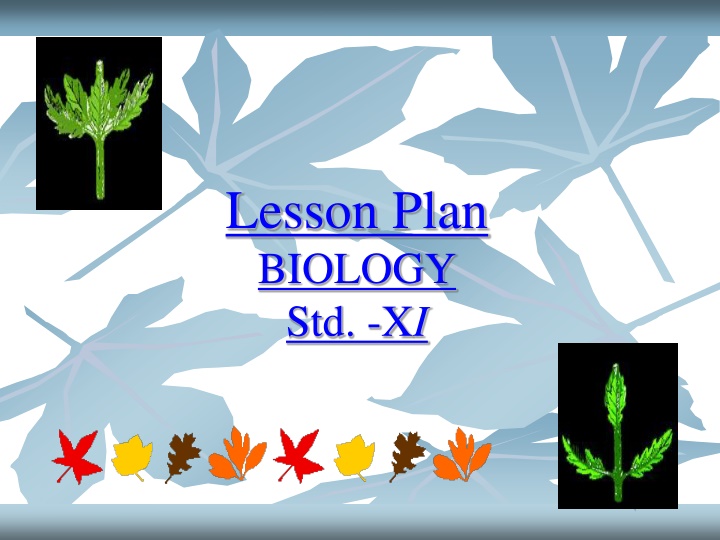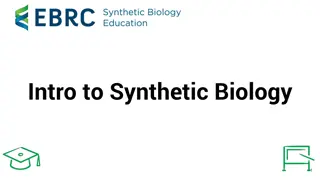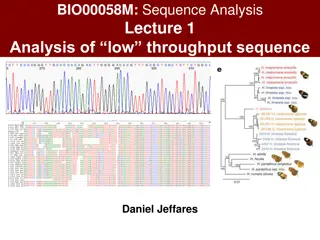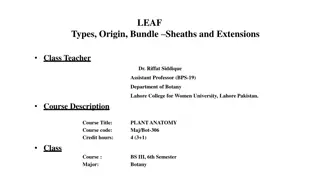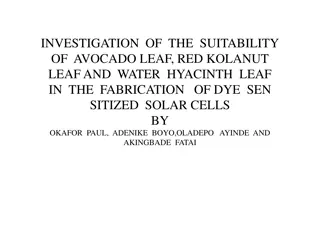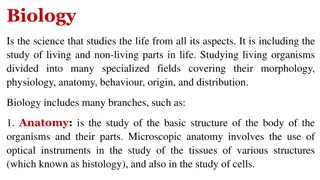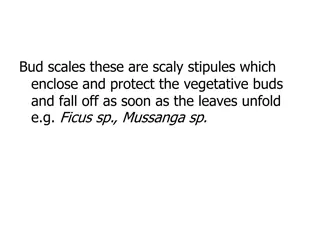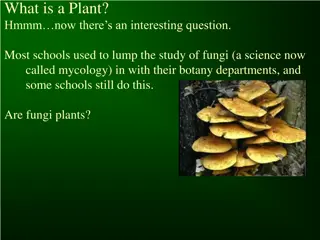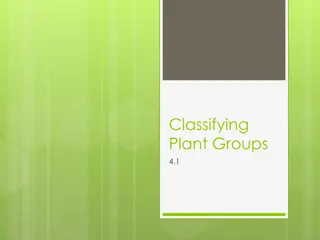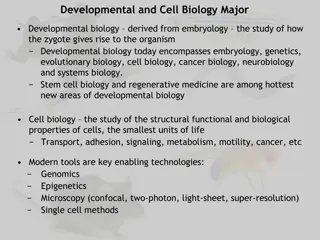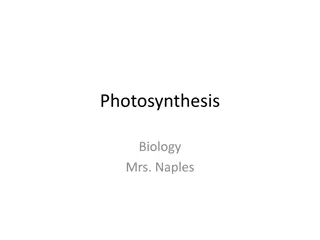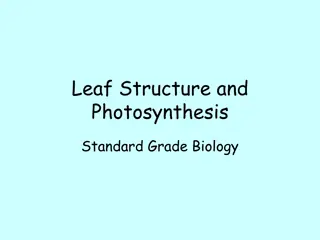Leaf Structure and Phyllotaxy in Plants: Lesson Plan for Biology Class XI
Explore the intricacies of leaf structure and phyllotaxy in plants through this engaging biology lesson plan designed for Class XI students. From understanding the components of a leaf to categorizing plants based on their arrangement, this lesson aims to enhance students' knowledge and familiarity with these essential botanical concepts.
Download Presentation

Please find below an Image/Link to download the presentation.
The content on the website is provided AS IS for your information and personal use only. It may not be sold, licensed, or shared on other websites without obtaining consent from the author.If you encounter any issues during the download, it is possible that the publisher has removed the file from their server.
You are allowed to download the files provided on this website for personal or commercial use, subject to the condition that they are used lawfully. All files are the property of their respective owners.
The content on the website is provided AS IS for your information and personal use only. It may not be sold, licensed, or shared on other websites without obtaining consent from the author.
E N D
Presentation Transcript
Lesson Plan BIOLOGY Std. -XI
Concept Study of the Leaf structure & Phyllotaxy in plants.
Purpose Awareness about the structure of a typical leaf & the types of Phyllotaxy in plants for their mode of arrangement
Category & Time Medium 40-45 minutes
Learning Outcomes Student s awareness about the * Typical leaf structure * Essentiality of various leaf parts in a plant * Familiarity about Phyllotaxy in plants
Technica l NonTehn -ical Teache r Student Lesson flow Verbal com muni catio n Active Partly - Why To have an idea about the importance of leaf parts in a typical leaf. To catagorise the plants on the basis of phyllotaxy, active
What Tech. Non Tech. Teacher Student Module on Bhartiyavi dya Original leaf Specimens Active Active M Definition of Leaf M Parts of typicalLeaf M Importance of these parts Definition of Phyllotaxy Types & subtypes of Phyllotaxy M H
How Tech. Non Tech. Teacher Student Activity: Session of Q/A on leaf structure & Phyllotaxy Study the structure of Leaf through original specimens. Look at the venation in leaf specimens & study it. Q/A on monitor Leaf Active through explanation Active specimens
Question session Q. Give the definition of leaf. Q. What do you call the structure by which leaf is attached at plant? Q. Give the technical term for the mode of arrangement of leaves on plant. Q. How many types of arrangement of leaves in plants are there/
What Else Teacher Student Tech. NonTechni- cal Collection of leaves samples 1. Collect some more leaf specimens to identify their venation, from your neighboring area . 2. Categories different plant as monocot & dicot on the basis of venation. 3. Find out that all the leaves have all the three parts or not. If not, note down the missing parts. Passive Active -
Definition of Leaf Leaf is the flattened outgrowth of Stem or a branch that develops at node & has a bud in it s axil. These are the dissimilar organs & are meant primarily for Photosynthesis, Respiration & Transpiration.
Parts of the Leaf 1. Leaf Base2. Petiole3. Lamina more
Leaf Base The part of leaf attached to the stem or branch is called- Leaf base. It protects a Bud in it s axil.
Petiole The part of leaf that connects the lamina with stem, is called leaf petiole. Some time a leaf may not have a petiole, such leaves are called Sessile otherwise the leaf is called Petiolate.
Lamina It is the flat, expended & broad part of leaf with framework of veins & veinlets. The lamina is the most important part of the leaf as it is the seat of food manufacturing in plant. Click on Image for JPG rendition Click on Image for JPG rendition
Phyllotaxy It is the mode of arrangement / distribution of leaves on stem or it s branch. Phyllotxy ensures that leaves may receive maximum sunlight for photosynthesis. Phyllotaxy Alternate Opposite Whorled
Alternate Phyllotaxy In such case only one leaf is attached at each node. The leaves are so arranged that a line drawn on the stem through the leaf bases will take a spiral course. Ex. Hibiscus, Brassica etc.
Opposite Phyllotaxy In such case two leaves are present at each node, standing opposite to each other. It is of two subtypes - Opposite decussate Opposite superposed
Opposite Decussate Here pairs of leaves at each successive node are placed at right angle to each other. Eg. Ocimum, Calotropis etc.
Oposite Superposed Here pairs of leaves at each successive node are placed over each other in same plane. Eg.Eugenia,Quisqualis etc.
Whorled Phyllotaxy In this type more than two leaves are present at each node, forming a whorl. Ex. Oleander, Alstonia etc. http://www.umanitoba.ca/faculties/science/biological_sciences/lab10/biolab10_4.h tml#Structure
This powerpoint was kindly donated to www.worldofteaching.com http://www.worldofteaching.com Is home to well over a thousand powerpoints submitted by teachers. This a free site. Please visit and I hope it will help in your teaching
